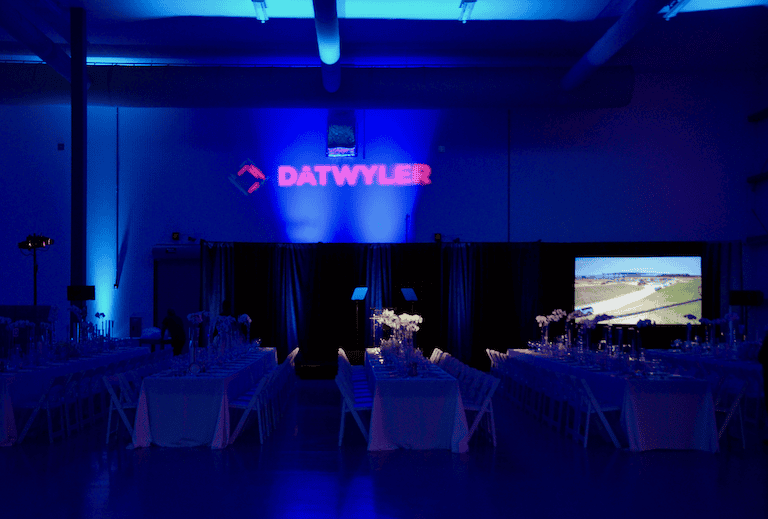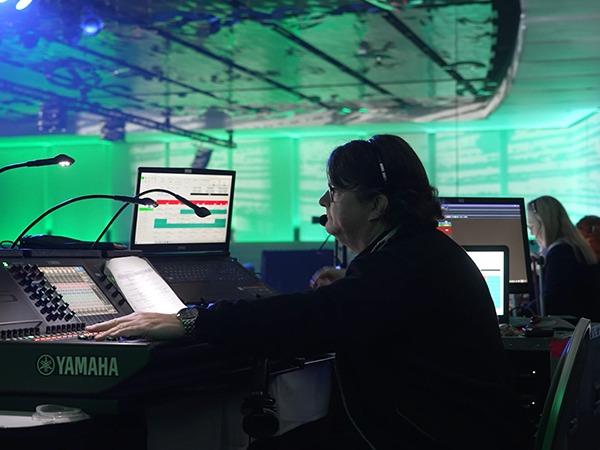Raise Your Gathering with Live Event Audio Visual Production Techniques
Raise Your Gathering with Live Event Audio Visual Production Techniques
Blog Article
Understanding the Process of Live Event Audio Visual Production
The complexities of real-time event sound aesthetic manufacturing demand a blend of technical competence and calculated preparation. As we check out the crucial elements that contribute to a successful event, it becomes evident that the foundation exists in both prep work and flexibility.
The Significance of Planning
Efficient planning is crucial for the success of any live occasion sound aesthetic manufacturing. A well-structured strategy functions as the foundation, leading every aspect of the occasion from fertilization to implementation. This process begins with specifying the event's purposes, understanding the target audience, and identifying the desired results. Establishing clear goals ensures that all employee are aligned and can function towards an usual objective.
Furthermore, precise scheduling is important. A detailed timeline that includes target dates for each stage of production helps to reduce potential threats and makes sure that all components are addressed in a prompt way. Reliable resource appropriation is vital; this consists of not only the human resources but additionally the budget plan, place, and materials required for the occasion.
Ultimately, thorough planning not only boosts the high quality of the audio aesthetic experience yet also instills confidence among the team and stakeholders, leading to a seamless and successful occasion. Without this structure, also the most ingenious ideas can falter, highlighting the indisputable importance of planning in live occasion sound visual production.

Secret Tools and Modern Technology
An effective live occasion audio aesthetic manufacturing relies heavily on the right equipment and modern technology to bring the vision to life. Crucial elements include audio systems, aesthetic displays, lights, and control systems, each playing a critical role in ensuring a seamless experience.
Top quality microphones catch instruments and vocals accurately, while mixers enable for real-time audio adjustments based on the event's characteristics. Visual screens, consisting of projectors and LED screens, are important for conveying info and improving audience involvement.
Illumination devices is an additional crucial component, as it sets the mood and highlights essential moments during the occasion. Alternatives vary from phase lights to smart lights systems that can be programmed for certain impacts. Control systems incorporate sound, aesthetic, and lighting aspects, ensuring cohesive operation throughout the production.
Purchasing dependable equipment and recognizing the current technical innovations can significantly boost the quality and impact of live occasion audio visual productions, ultimately contributing to a memorable target market experience. Live Event Audio Visual Production.
Obligations and Roles
Effective online event audio visual production requires a well-defined framework of duties and obligations among group members. Each role is critical to make certain smooth procedures and accomplish the wanted end result.
The sound engineer is accountable for managing sound top quality, consisting of microphone placement, sound blending, and ensuring that all audio elements are integrated with visual web content. The lights developer creates a setting that improves the event's state of mind, choosing appropriate fixtures and programs lighting hints to complement the performance or presentation.
A video specialist oversees all visual elements, including electronic camera procedure, video changing, and forecast management. They function closely with the supervisor, that coordinates the general manufacturing, making real-time websites decisions to guarantee that the occasion flows seamlessly.
Manufacturers take care of budgeting and organizing, ensuring that all elements of the event line up with the client's vision. This collaborative structure makes it possible for an effective sound aesthetic production, aligning each member's knowledge towards an unified goal.
Execution and Live Production
Executing a live event requires meticulous planning and real-time adaptability to guarantee all aspects collaborated flawlessly. The implementation stage is where the foundation laid throughout pre-production is put into activity. Secret to this process is the coordination of various technical groups, consisting of sound engineers, lighting professionals, and video manufacturing crews. Each group must be aligned with the event's vision while maintaining clear interaction to deal with any type of unexpected challenges that emerge during the event.

In addition, target market engagement is vital. The manufacturing group need to stay watchful, adapting to target market responses and comments. This responsiveness boosts the general experience, permitting a dynamic environment that resonates with participants. Inevitably, successful execution culminates in a natural real-time occasion that mesmerizes the audience and satisfies the client's goals.
Post-Event Analysis and Feedback
Adhering to the verdict of a real-time event, carrying out a thorough post-event assessment is vital for identifying toughness and locations for improvement. This evaluation process should include celebration comments from numerous stakeholders, including participants, event personnel, and customers (Live Event Audio Visual Production). By using surveys, interviews, and informal discussions, organizers can get useful insights into the total experience and efficiency of the audiovisual production
Examining technical aspects such as audio high quality, visual quality, and devices integrity is critical. In addition, examining the sychronisation in between the production team and other divisions aids to determine logistical difficulties and successes. Recognizing any type of problems encountered during the occasion makes it possible for groups to create methods for mitigating similar issues in future manufacturings.
Furthermore, compiling and examining feedback helps with the acknowledgment of standout aspects, such as smooth shifts or engaging discussions, which can be highlighted in future events. The post-event evaluation not only gives a roadmap for enhancement however additionally cultivates a society of continual discovering within the group. Inevitably, this reflective technique improves the quality of future real-time events, making certain that they meet or exceed target market expectations and supply a remarkable experience.
Conclusion
Finally, efficient live event audio aesthetic manufacturing necessitates thorough planning, knowledgeable control among diverse roles, and the combination of innovative innovation. Each element, from tools choice to team collaboration, plays an important function in delivering a successful event. In addition, engaging in post-event analyses makes it possible for constant enhancement, making sure that future productions profit from understandings gotten. Inevitably, a well-executed audio visual method dramatically boosts target market involvement and contributes to the total success of real-time anonymous occasions.
The complexities of real-time event audio visual production need a mix of technical proficiency and tactical planning.Efficient planning is necessary for the success of any like this kind of live occasion audio aesthetic production. Without this structure, also the most innovative ideas can fail, underscoring the undeniable significance of preparation in live event sound visual manufacturing.
Each team should be lined up with the event's vision while keeping clear interaction to attend to any unpredicted challenges that develop throughout the event.
In verdict, reliable real-time occasion sound aesthetic manufacturing requires detailed preparation, knowledgeable sychronisation amongst diverse functions, and the assimilation of sophisticated modern technology.
Report this page